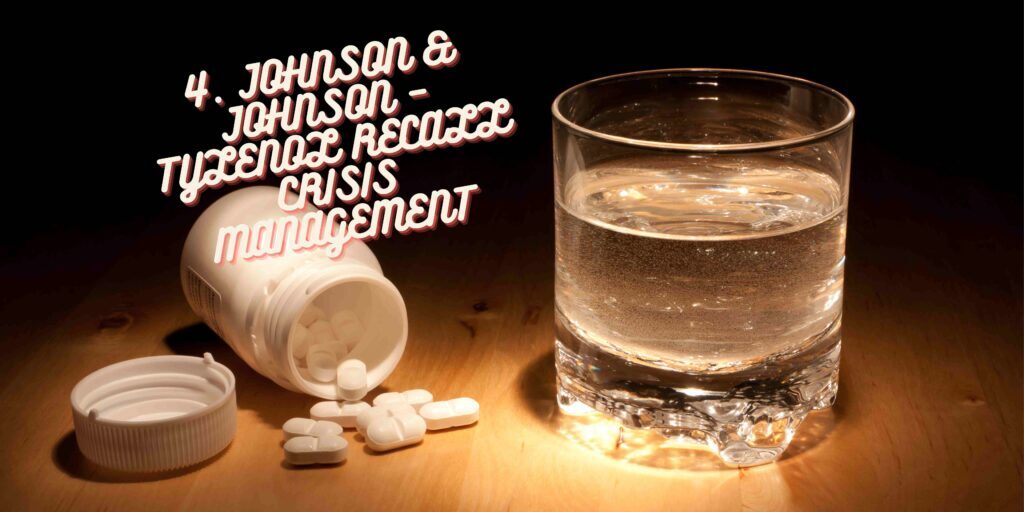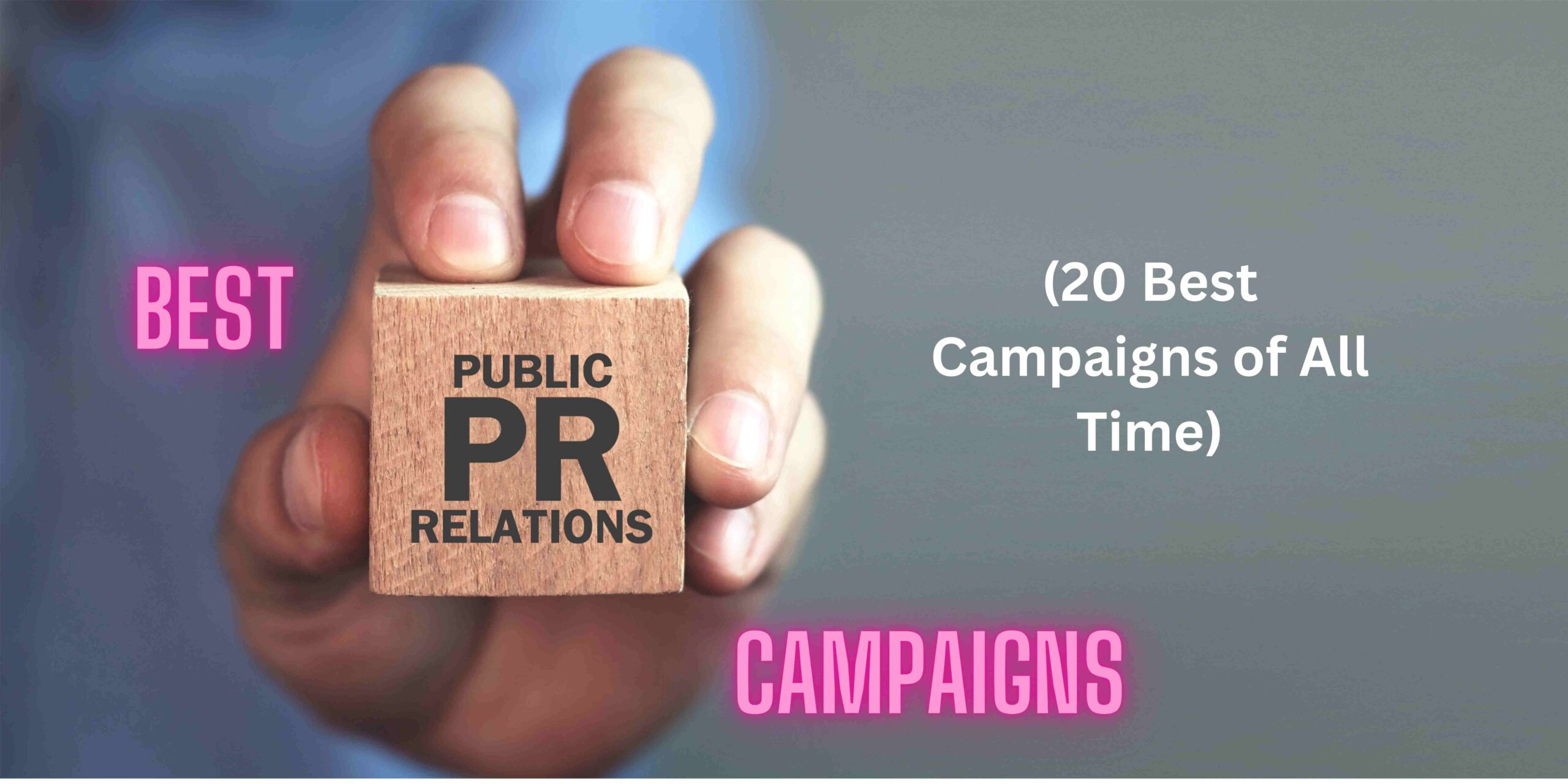
25 Mar 20 BEST PR CAMPAIGNS
In the ever-evolving realm of marketing, Public Relations (PR) stands as a cornerstone of brand communication, wielding the power to shape public perception, influence opinions, and drive consumer engagement. Overall, PR plays a vital role in contributing to the success and sustainability of organizations across various industries. And at the heart of exceptional PR lies the art of crafting campaigns that resonate deeply with audiences, leaving an indelible mark on both hearts and minds.
Exemplary PR campaigns serve as powerful tools in the arsenal of modern marketing, transcending mere promotion to craft compelling narratives that resonate deeply with audiences. These campaigns harness the art of storytelling, strategic communication, and creative innovation to not only capture attention but also shape brand perception and influence public sentiment. By forging authentic connections, sparking meaningful conversations, and evoking emotional responses, exemplary PR campaigns have the potential to leave an indelible mark on the hearts and minds of consumers.
Moreover, they play a pivotal role in building and safeguarding brand reputation, fostering trust, credibility, and loyalty among stakeholders. In an era defined by constant connectivity and information overload, the significance of PR campaigns in shaping brand narratives and driving engagement cannot be overstated, underscoring the vital role they play in today’s competitive business landscape.
At Amra and Elma we embark on a journey through the annals of marketing brilliance as we unveil the best PR campaigns that have redefined the landscape of brand communication. From iconic classics that have stood the test of time to groundbreaking innovations that have captured the zeitgeist, these campaigns represent the epitome of strategic prowess, creativity, and impact.
20 Best PR Campaigns of All Time
What are Public Relations?
Public Relations (PR) is a strategic communication discipline aimed at managing the relationship between an organization and its various stakeholders, including the public, customers, employees, investors, media, government bodies, and the wider community. PR professionals work to shape and maintain a positive public image for the organization by effectively communicating its values, objectives, and achievements.
PR encompasses a wide range of activities and tactics, including media relations, crisis management, community engagement, event planning, influencer outreach, social media management, and content creation. The ultimate goal of PR is to build and maintain trust, credibility, and goodwill among key audiences, thereby enhancing the organization’s reputation and fostering positive relationships.
What is a PR campaign?
It is a strategic and coordinated effort aimed at managing and shaping public perception, fostering positive relationships with key stakeholders, and achieving specific communication objectives on behalf of an organization or brand. PR campaigns typically involve the development and execution of targeted messaging, implementing tactics designed to generate publicity, enhance reputation, and drive engagement.
These efforts often focus on promoting brand awareness, launching new products or initiatives, addressing issues or crises, or supporting broader marketing goals. Overall, the ultimate aim of a PR campaign is to build and maintain trust, credibility, and goodwill among the organization’s target audience, thereby contributing to its overall success and sustainability.
There are numerous platforms and channels that you can leverage for a PR campaign, depending on your target audience, campaign objectives, and budget:
- Traditional media: newspapers, magazines, television, radio
- Digital media: Social media platforms (Facebook, Twitter, Instagram, LinkedIn, YouTube, TikTok), websites and blogs, online news outlets, podcasts
- Influencer marketing platforms: Influencer marketing platforms (e.g., Instagram influencers, YouTube creators), blogger networks, celebrity endorsements
- Events and experiential marketing: product launch events, press conferences, trade shows and conferences, sponsorship opportunities
- Content marketing: branded content, sponsored articles, infographics, videos, whitepapers and eBooks
- Community engagement: online forums and communities, Reddit, Quora, online discussion groups
- Email marketing: newsletters, press releases, email campaigns
- Crisis management platforms: crisis communication tools, social listening tools
- Public relations agencies: PR agencies and firms, freelance PR professionals
- Internal communication platforms: internal newsletters, intranet, employee engagement platforms
What makes a PR campaign effective and memorable?
A successful PR campaign starts with clearly defined goals and objectives aligned with the organization’s overall strategic objectives. Whether it’s increasing brand awareness, driving sales, enhancing reputation, or promoting a specific message, having well-defined objectives provides direction and helps measure the campaign’s success. We can also highlight:
- Audience Relevance: Understanding the target audience’s demographics, preferences, behaviors, and interests is crucial for tailoring the campaign’s messaging and delivery channels effectively. A memorable PR campaign resonates with its audience by addressing their needs, concerns, and aspirations in a meaningful way.
- Compelling Storytelling: Storytelling lies at the heart of effective PR campaigns, as it helps create emotional connections and captivate audiences. A compelling narrative that communicates the organization’s values, mission, or brand proposition in a memorable and relatable manner can significantly enhance the campaign’s impact and resonance.
- Creativity and Innovation: Memorable PR campaigns often break through the clutter by leveraging creativity and innovation in their concepts, execution, and delivery. Whether it’s an unconventional idea, a unique visual approach, or an interactive experience, creativity can help the campaign capture attention and spark interest among audiences.
- Strategic Messaging: Crafting clear, concise, and consistent messaging is essential for ensuring that the campaign effectively communicates its intended purpose and key points. Strategic messaging should align with the organization’s brand identity and positioning while resonating with the target audience’s values and preferences.
- Multi-Channel Integration: Leveraging multiple communication channels, including traditional media, social media, digital platforms, events, and influencers, allows the campaign to reach a broader audience and maximize exposure. Integration across various channels ensures a cohesive and consistent brand experience for audiences.
- Authenticity and Transparency: Authenticity builds trust and credibility with audiences, making it essential for PR campaigns to maintain honesty and transparency in their messaging and actions. Authentic campaigns that align with the organization’s values and demonstrate genuine commitment to their audience’s interests are more likely to resonate and leave a positive impression.
- Measurable Results: Tracking and measuring the campaign’s performance against predefined metrics and KPIs enable PR professionals to evaluate its effectiveness and make data-driven decisions for optimization. Whether it’s media coverage, social media engagement, website traffic, or brand sentiment, quantifiable results provide valuable insights into the campaign’s impact and ROI.
Best PR Campaigns of All Time and What Makes Them Exceptional
1. Coca-Cola – “Share a Coke” PR Campaign
Coca-Cola’s “Share a Coke” campaign is widely regarded as one of the best PR campaigns of all time due to its unparalleled success in engaging consumers on a personal level and revitalizing brand perception.
Unlike traditional marketing approaches, the campaign transformed Coca-Cola’s packaging by replacing the iconic logo with popular names and phrases, encouraging consumers to share personalized bottles with friends and loved ones. This innovative strategy tapped into the universal desire for personalization and connection, resonating deeply with consumers across demographics.
Moreover, the “Share a Coke” campaign exemplified the power of user-generated content, inspiring consumers to share photos and stories of their personalized Coca-Cola bottles on social media platforms. This organic, grassroots engagement amplified the campaign’s reach and visibility, sparking a viral sensation that extended far beyond Coca-Cola’s initial marketing efforts.
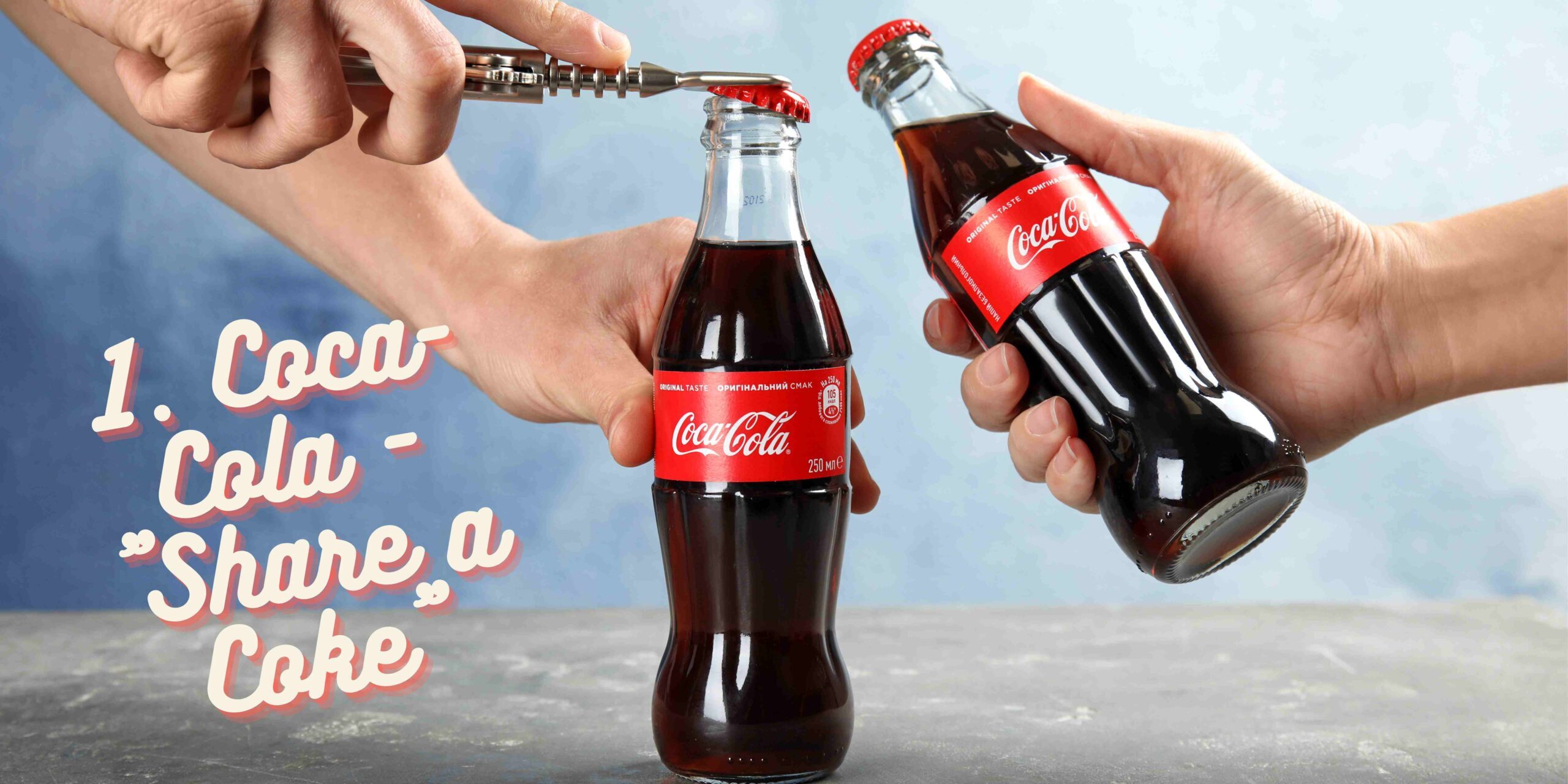
2. Nike – “Dream Crazy” with Colin Kaepernick PR Campaign
Nike’s “Dream Crazy” campaign featuring Colin Kaepernick stands due to its bold stance on social justice issues and its profound impact on public discourse. By featuring Kaepernick, a polarizing figure known for his activism against racial injustice, Nike took a calculated risk that ignited widespread conversation and controversy.
The campaign’s powerful message—”Believe in something. Even if it means sacrificing everything”—resonated with audiences around the world, sparking debates on patriotism, freedom of expression, and corporate responsibility.
Beyond its provocative messaging, the “Dream Crazy” campaign showcased Nike’s commitment to authenticity and inclusivity, aligning the brand with a cultural movement that transcended sports. By amplifying Kaepernick’s message and championing his cause, Nike positioned itself as a champion of social progress and empowerment, resonating with a younger, more socially conscious demographic.
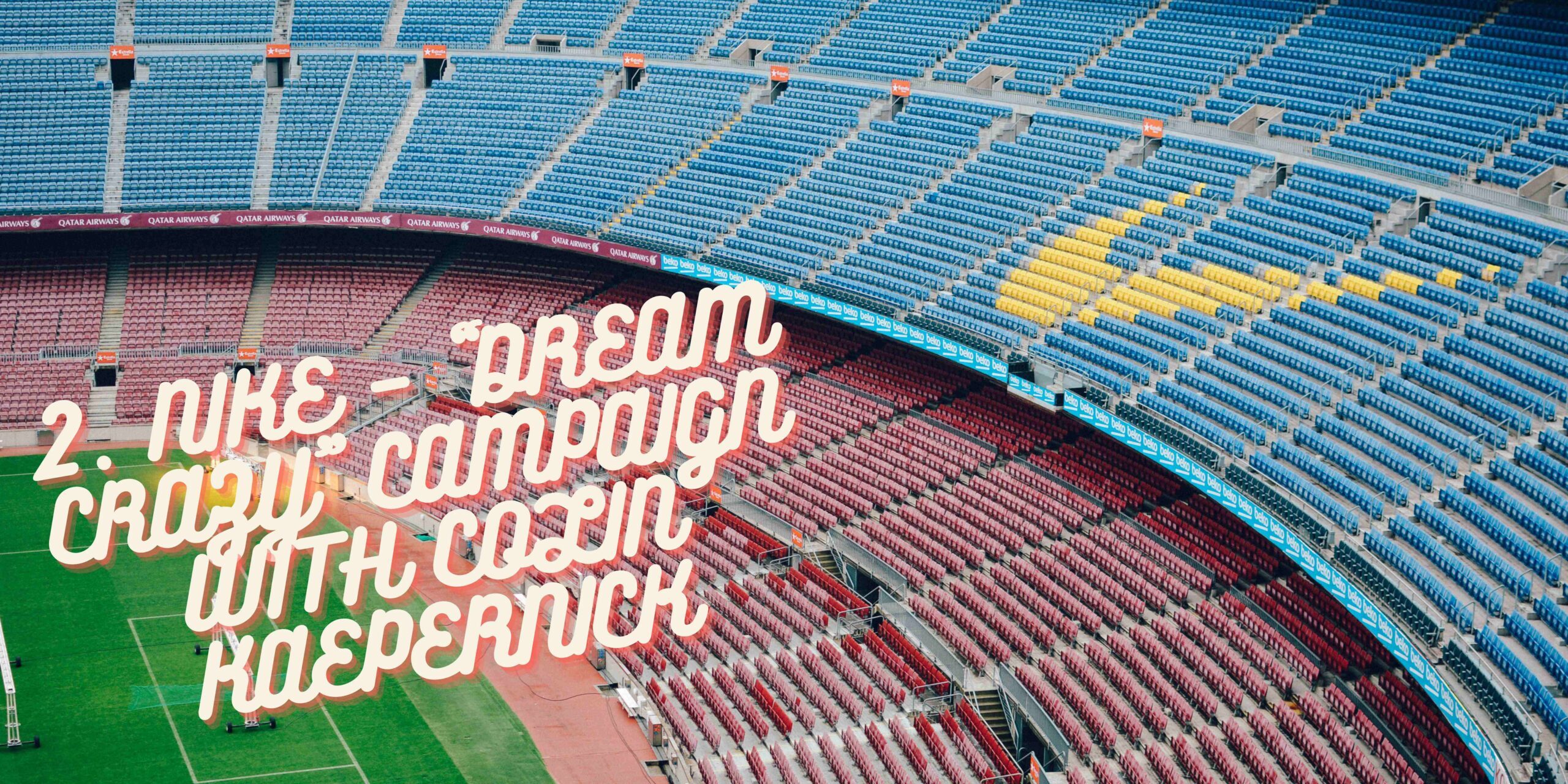
3. Airbnb – “Live There” PR Campaign
This brand slogan encourages limitless imagination and reinforces the idea that playing with Barbie can inspire children to explore various career paths and possibilities. “You Can Be Anything” embodies the spirit of empowerment and aspiration, encouraging children to dream big and pursue their passions without limitations.
“You Can Be Anything” aligns perfectly with Barbie’s evolution over the years, promoting inclusivity and diversity. It aims to empower young minds to dream big and see themselves in diverse roles, breaking stereotypes and celebrating individuality. By showcasing a wide range of career options and empowering narratives, Barbie’s brand slogan inspires children to believe in their potential and embrace their uniqueness. It’s a powerful message of encouragement and empowerment that resonates with parents and children alike, reinforcing Barbie’s role as a catalyst for imagination and self-expression.
4. Johnson & Johnson – Tylenol Recall Crisis Management PR Campaign
The Johnson & Johnson’s Tylenol Recall Crisis Management PR campaign is widely regarded as a masterclass in crisis communication.
Firstly, Johnson & Johnson’s swift and decisive response to the crisis set a new standard for corporate responsibility. Upon learning of tampering with Tylenol capsules that resulted in several deaths, Johnson & Johnson prioritized consumer safety over profits by immediately recalling 31 million bottles of Tylenol, worth over $100 million, from store shelves nationwide. This proactive action demonstrated a commitment to transparency and accountability, earning widespread praise and trust from consumers.
Secondly, they effectively communicated with the public by prioritizing honesty, openness, and empathy. The company’s CEO at the time, James Burke, took a hands-on approach in addressing the crisis, appearing in television interviews to reassure the public and provide regular updates on the investigation.
Johnson & Johnson also issued a nationwide warning urging consumers not to consume Tylenol products, emphasizing their dedication to consumer welfare. Additionally, Johnson & Johnson collaborated closely with law enforcement agencies and government officials to investigate the tampering incidents and ensure the safety of consumers. This transparent and empathetic communication strategy helped alleviate public concerns and maintain trust in the brand.
5. Dove – “Real Beauty Sketches” PR Campaign
The Dove “Real Beauty Sketches” campaign is notable for its powerful message and innovative approach to promoting self-esteem and body positivity. Unlike traditional beauty campaigns that often rely on unrealistic standards of beauty, Dove’s campaign challenged these norms by showcasing the stark contrast between how women perceive themselves and how others perceive them.
Through a social experiment involving sketch artists, Dove captured raw and emotional reactions as women described themselves and others described them. The campaign revealed the tendency for women to be overly critical of their own appearance and highlighted the importance of self-acceptance and seeing beauty beyond physical attributes.
Moreover, the “Real Beauty Sketches” campaign resonated deeply with audiences around the world, sparking a global conversation about beauty standards and self-image. Its emotionally compelling content struck a chord with viewers, generating widespread media coverage, social media buzz, and millions of views on YouTube.
By leveraging digital and social media platforms, Dove effectively amplified the campaign’s message and engaged with audiences on a personal level, fostering meaningful dialogue and encouraging self-reflection.

6. Old Spice – “The Man Your Man Could Smell Like” PR Campaign
Launched in 2010, the campaign featured actor Isaiah Mustafa portraying a suave and confident character delivering humorous and memorable monologues in a series of commercials. The campaign effectively revitalized the Old Spice brand, transforming it from a traditional men’s grooming product into a cultural phenomenon.
What set this campaign apart was its innovative use of humor, creativity, and viral marketing strategies to captivate audiences and generate buzz. The commercials were witty, irreverent, and highly entertaining, appealing to a broad audience across demographics.
Moreover, the campaign leveraged social media platforms such as YouTube, Twitter, and Facebook to engage with consumers in real-time, responding to comments and creating interactive experiences that further amplified its reach.
By embracing a bold and unconventional approach to marketing, Old Spice successfully repositioned itself as a brand that was relevant, relatable, and in tune with contemporary culture. The campaign not only drove significant increases in sales and market share for Old Spice but also earned numerous awards and accolades, cementing its status as a classic example of PR excellence in the digital age.
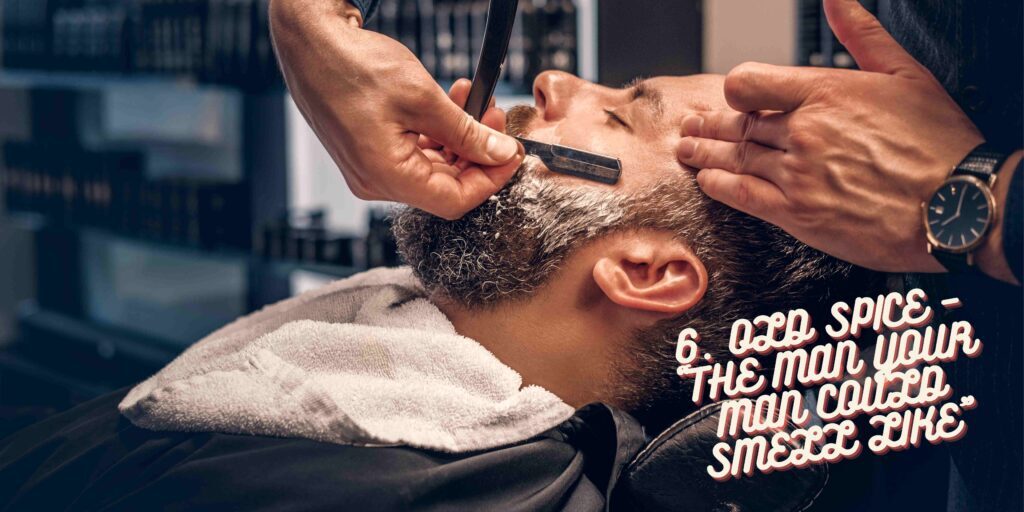
7. ALS Association – Ice Bucket Challenge PR Campaign
Originating in the summer of 2014, ALS Association’s Ice Bucket Challenge involved participants dumping buckets of ice water over their heads and challenging others to do the same to raise awareness and funds for amyotrophic lateral sclerosis (ALS), also known as Lou Gehrig’s disease.
What made this campaign exceptional was its grassroots nature and unprecedented virality on social media. It spread rapidly across various platforms, with celebrities, politicians, athletes, and ordinary individuals alike participating and sharing their videos online. The Ice Bucket Challenge captured the imagination of millions, igniting a global phenomenon that transcended borders and cultural barriers.
By tapping into the power of social media and user-generated content, the ALS Association harnessed the collective energy and enthusiasm of participants to drive widespread awareness and donations for ALS research and support services.
The campaign’s success was a testament to the potential of digital platforms to mobilize and unite people around a common cause, illustrating the transformative impact of PR in raising awareness and driving social change.
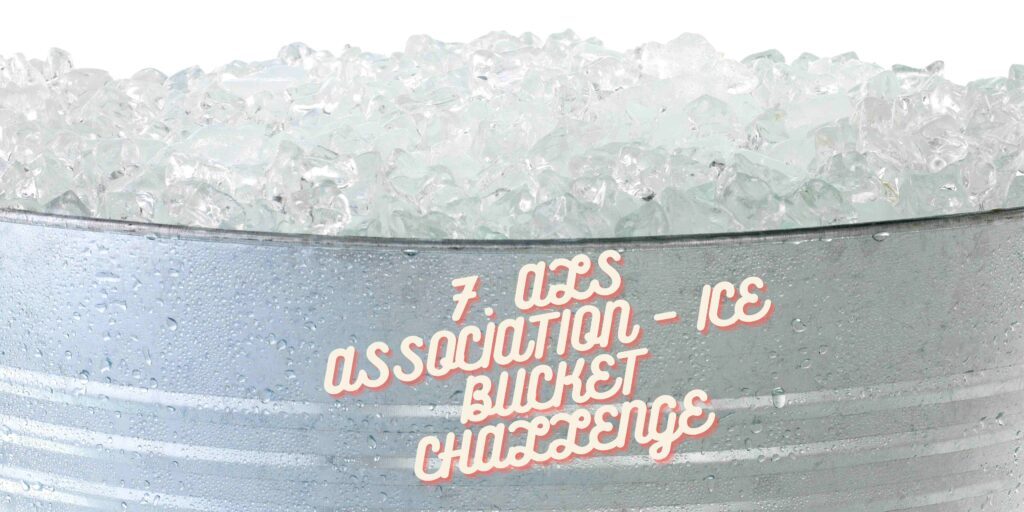
8. P&G – “Thank You, Mom” PR Campaign
P&G’s “Thank You, Mom” campaign is widely celebrated as one of the most heartwarming and impactful PR campaigns in recent memory. Launched in conjunction with the 2012 London Olympics, the campaign aimed to honor and celebrate the unwavering support and sacrifices of mothers in helping their children achieve their dreams.
Through a series of emotionally charged commercials and digital content, P&G captured the universal bond between mothers and their children, highlighting poignant moments of love, encouragement, and resilience.
What made this campaign remarkable was its ability to evoke deep emotional connections with audiences around the world. By tapping into the powerful theme of maternal love and sacrifice, P&G struck a chord with viewers of all ages and backgrounds, eliciting tears and smiles alike. The campaign’s authenticity and universality resonated deeply with consumers, positioning P&G as a brand that understood and celebrated the inherent value of family and relationships.
Moreover, the “Thank You, Mom” campaign demonstrated P&G’s mastery of integrated marketing and storytelling across multiple channels. From compelling television commercials to engaging digital content and social media activations, P&G created a cohesive and immersive brand experience that extended beyond traditional advertising.

9. Patagonia – “Don’t Buy This Jacket” PR Campaign
Launched in 2011, Patagonia’s “Don’t Buy This Jacket” campaign featured a full-page advertisement in The New York Times on Black Friday, one of the busiest shopping days of the year, urging consumers to think twice before purchasing new products. The ad, which showcased one of Patagonia’s best selling jackets alongside the headline “Don’t Buy This Jacket,” challenged the prevailing culture of consumerism and encouraged consumers to consider the environmental impact of their purchases.
What set this campaign apart was its boldness and authenticity in addressing sustainability and ethical consumption. By openly discouraging unnecessary purchases and promoting conscious consumerism, Patagonia demonstrated its commitment to environmental stewardship and corporate responsibility. The campaign sparked widespread conversation and debate, drawing attention to the urgent need for more sustainable practices within the fashion industry and beyond.
Rather than focusing solely on driving sales and revenue, Patagonia prioritized educating consumers about the environmental footprint of its products and advocating for mindful consumption. This commitment to purpose-driven marketing not only resonated with Patagonia’s environmentally conscious customer base but also attracted new audiences who shared its values of sustainability and social responsibility.

10. Domino’s Pizza Turnaround PR Campaign
Domino’s Pizza Turnaround Campaign is hailed as a paradigm-shifting PR effort that redefined the brand’s image and revitalized its reputation in the face of widespread criticism.
Launched in 2009, the campaign marked a pivotal moment for Domino’s as it acknowledged customer dissatisfaction with the quality of its pizza and pledged to overhaul its recipes and ingredients. Domino’s took a bold and transparent approach by admitting its shortcomings and committing to a complete “pizza turnaround.”
Domino’s launched a multifaceted communication strategy that included television commercials, online videos, social media engagement, and public relations efforts to communicate its commitment to change. The brand’s CEO appeared in ads, addressing customer complaints and sharing the steps Domino’s was taking to improve its pizzas.
The Domino’s Pizza Turnaround Campaign demonstrated the power of listening to customers and responding decisively to their feedback. By openly acknowledging criticism and taking swift action to improve product quality, Domino’s not only regained consumer trust but also generated widespread media attention and positive word-of-mouth.
The campaign’s transparency, coupled with its bold messaging and strategic execution, led to a significant turnaround in Domino’s fortunes, with increased sales and a restored brand reputation.
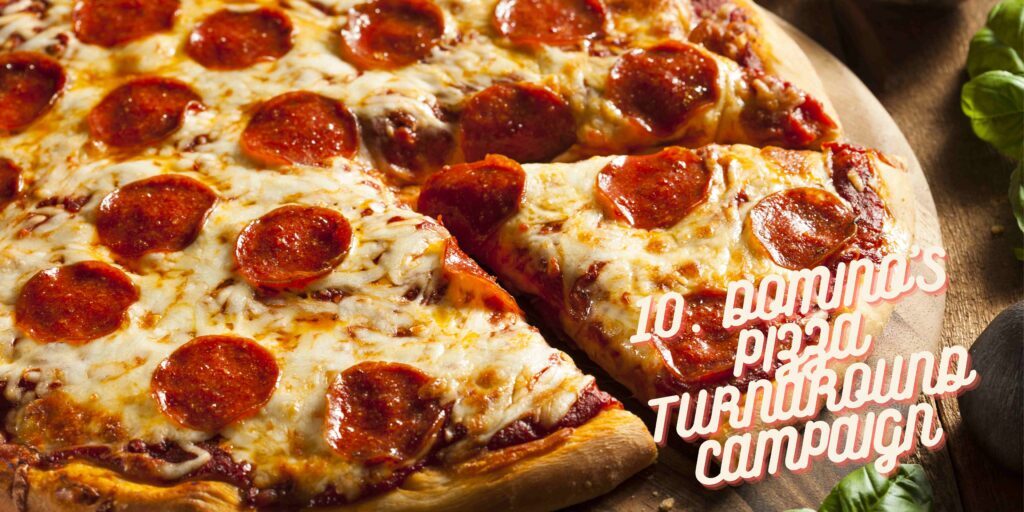
11. Netflix’s “A Great Day in Harlem” PR Campaign
Netflix’s “A Great Day in Harlem” campaign stands as a groundbreaking PR initiative that showcased the streaming giant’s commitment to diverse storytelling and cultural representation.
Launched in 2017, the campaign celebrated the release of Netflix’s original series, “The Defenders,” which brought together superheroes from four different Marvel series. Taking inspiration from the iconic photograph “A Great Day in Harlem,” which captured the gathering of jazz legends in 1958, Netflix organized a photoshoot featuring the cast and crew of “The Defenders” as well as other prominent figures in the entertainment industry.
What set this campaign apart was its creative and inclusive approach to promoting a superhero series with diverse characters and narratives. The “A Great Day in Harlem” photoshoot brought together a diverse array of talent, including actors, writers, directors, and producers, representing different backgrounds and perspectives.
The resulting photograph served as a powerful symbol of unity and representation, highlighting Netflix’s commitment to diversity and inclusivity in its content. Moreover, the campaign leveraged social media and digital platforms to amplify its message and engage with audiences worldwide.
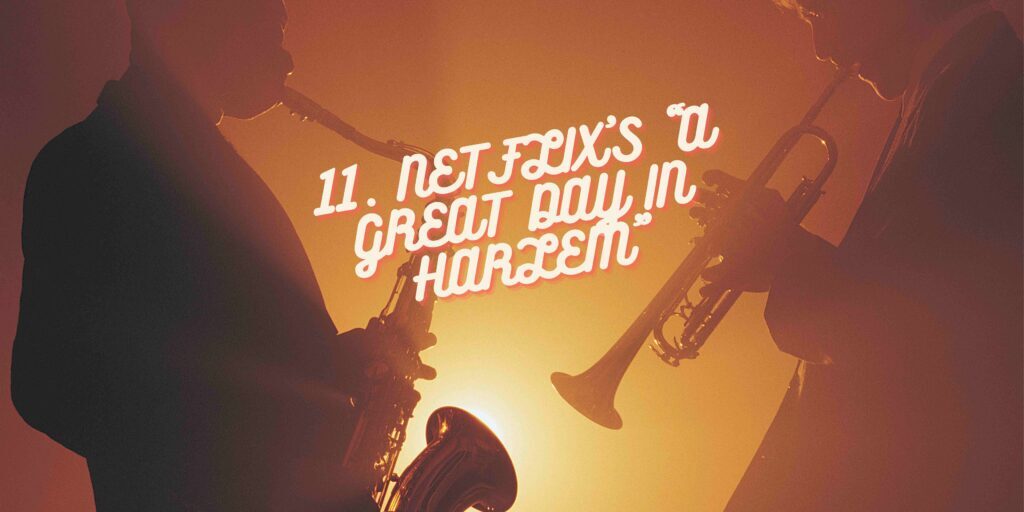
12. Apple – “1984” Macintosh Launch PR Campaign
Launched during Super Bowl XVIII in 1984, this campaign introduced the world to the Macintosh computer with a cinematic television commercial directed by Ridley Scott. The ad, inspired by George Orwell’s novel “1984,” depicted a dystopian world of conformity and control, with a lone female athlete running through a crowd of mindless drones and smashing a giant screen displaying a Big Brother figure.
What made this campaign remarkable was its boldness, creativity, and ability to redefine the norms of advertising. Apple positioned itself as a revolutionary force challenging the status quo in the tech industry, symbolized by the dominance of IBM and other corporate giants at the time. The “1984” commercial captured the imagination of viewers with its striking visuals, powerful symbolism, and underlying message of individualism and empowerment.
The campaign exemplified Apple’s mastery of storytelling and brand narrative, setting the stage for decades of iconic marketing efforts to come. By positioning the Macintosh as a symbol of liberation and creativity, Apple differentiated itself from its competitors and forged a deep emotional connection with consumers.
The campaign generated immense buzz and anticipation for the Macintosh launch, propelling Apple to new heights of success and solidifying its reputation as a trailblazer in the technology industry.
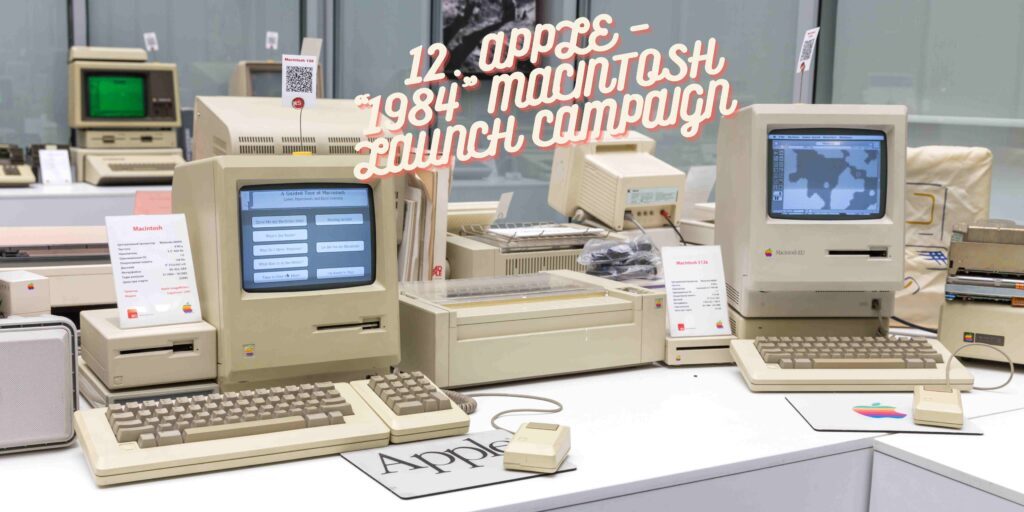
13. Red Bull – Stratos PR Campaign
Launched in 2012, the campaign featured Austrian skydiver Felix Baumgartner’s record-breaking freefall from the stratosphere, sponsored by Red Bull. Baumgartner ascended to an altitude of over 24 miles in a helium balloon before leaping into the void and freefalling at speeds exceeding the sound barrier.
Its audacity and spectacle caught the eyes of many, capturing the imagination of millions and generating widespread media coverage and social media buzz. Red Bull leveraged cutting-edge technology and engineering expertise to orchestrate the complex logistics of the Stratos jump, turning it into a global event watched by millions of viewers live online. The campaign showcased Red Bull’s brand values of adventure, innovation, and pushing the limits of human potential.
By aligning itself with Baumgartner’s record-breaking feat, Red Bull positioned itself as a champion of extreme sports and adrenaline-fueled endeavors, reinforcing its brand image as a provider of energy and exhilaration. The Stratos jump not only captured the world’s attention but also cemented Red Bull’s status as a leader in marketing innovation and brand activation.
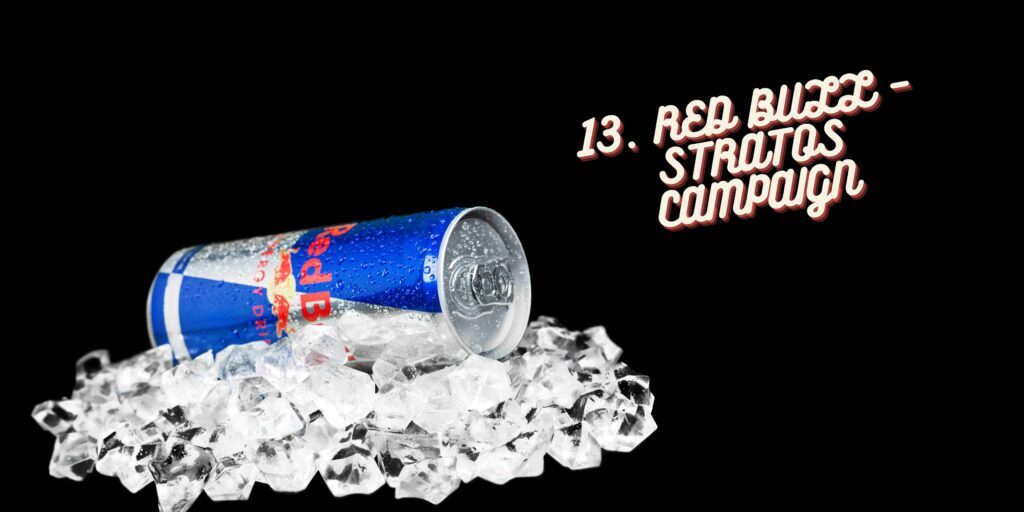
14. IKEA – “BookBook” PR Campaign
IKEA’s “BookBook” campaign is celebrated as a brilliant and humorous PR initiative that cleverly promoted the brand’s catalog in the digital age. Launched in 2014, the campaign introduced the “IKEA BookBook,” a parody video showcasing the fictional launch of a revolutionary product—the IKEA catalog in the form of a sleek, high-tech device resembling an Apple product.
The video mimicked the style of an Apple product announcement, complete with a charismatic narrator highlighting the catalog’s features and benefits in a tongue-in-cheek manner.
By parodying the conventions of tech product launches and embracing humor, IKEA effectively captured the attention of consumers and generated widespread buzz on social media and news outlets. The “BookBook” video resonated with audiences, striking a balance between entertainment and brand messaging while showcasing IKEA’s creativity and innovation.
Moreover, the “BookBook” campaign exemplified IKEA’s brand identity as a provider of affordable, functional, and stylish home furnishings. By positioning the catalog as an essential tool for home inspiration and design, IKEA reinforced its commitment to empowering consumers to create their ideal living spaces.
The campaign’s success demonstrated the power of storytelling and humor in engaging audiences and driving brand awareness, establishing the “BookBook” as a memorable and iconic PR moment in IKEA’s marketing history.
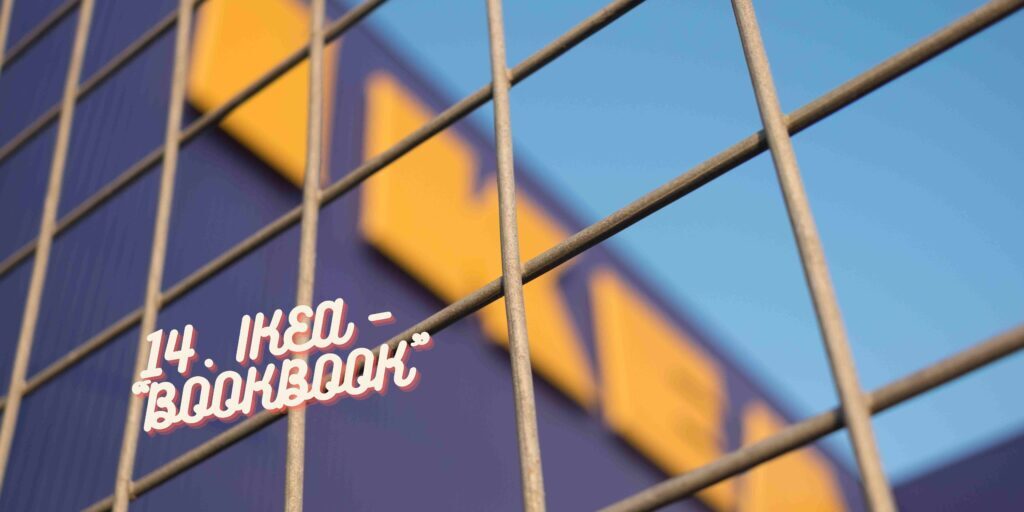
15. Chipotle – “The Scarecrow” PR Campaign
Chipotle’s “The Scarecrow” campaign is lauded as a poignant and thought-provoking PR initiative that addressed issues of sustainability and ethical food production in the fast-food industry.
Launched in 2013, the campaign featured an animated short film titled “The Scarecrow,” accompanied by a mobile game and interactive website. The film depicted the journey of a scarecrow who discovers the harsh realities of industrial food production and ultimately chooses to farm sustainably and ethically, embodying Chipotle’s commitment to “food with integrity.”
This campaign stands out due to its ability to raise awareness about the importance of sustainable food practices and educate consumers about Chipotle’s sourcing and ingredients. The campaign challenged the conventions of traditional fast-food advertising, positioning Chipotle as a leader in the movement towards more sustainable and ethical food options.
By highlighting its commitment to sourcing ingredients from local, family-owned farms and avoiding artificial additives and preservatives, Chipotle differentiated itself from its competitors and appealed to consumers seeking healthier and more ethical dining options.
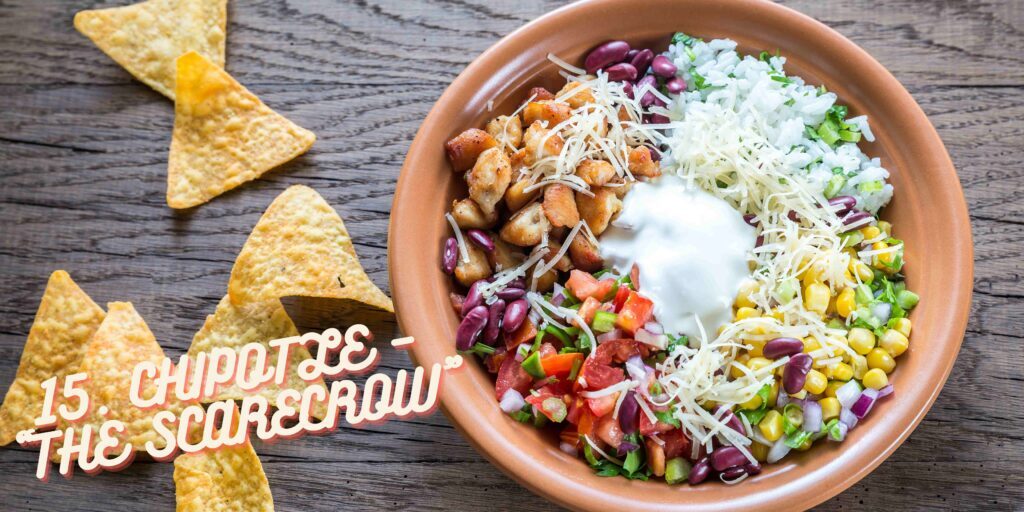
16. UNICEF’s Tap Project PR Campaign
UNICEF’s Tap Project is recognized as one of the most innovative and impactful PR campaigns in the nonprofit sector, leveraging technology to raise awareness and funds for clean water initiatives around the world.
Launched in 2007, the Tap Project encouraged restaurant-goers to donate $1 or more for the tap water they usually received for free, with the proceeds going towards providing clean and safe drinking water to children in need.
What made this campaign remarkable was its simplicity and effectiveness in harnessing everyday actions to drive social impact. By transforming a routine behavior like drinking water into an opportunity to give back, the Tap Project empowered individuals to make a difference and contribute to a global cause. The campaign also leveraged digital platforms and social media to amplify its reach, encouraging widespread participation and engagement.
The campaign raised awareness about a pressing global issue and inspired millions to support UNICEF’s mission by highlighting the importance of clean water access and the impact it has on children’s health and well-being.
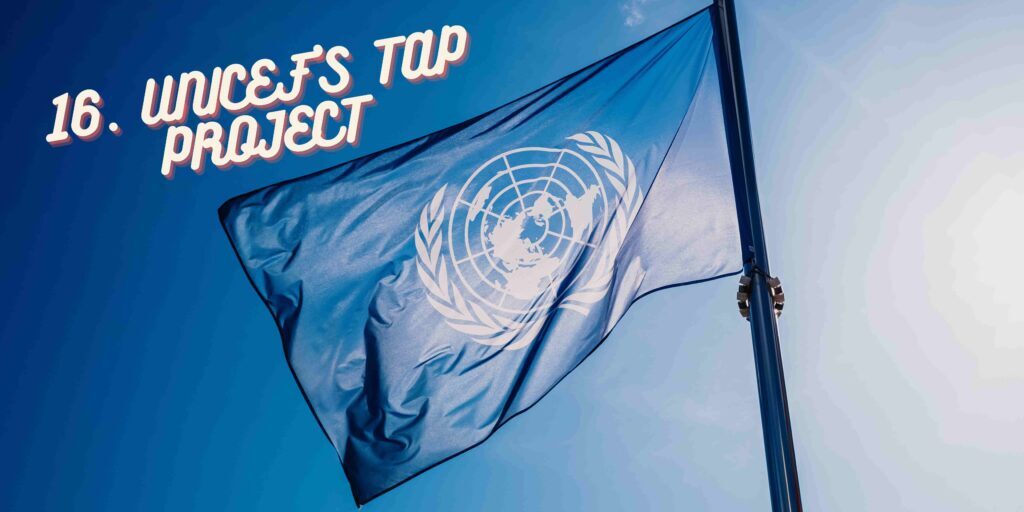
17. Budweiser – “Whassup?” PR Campaign
Budweiser’s “Whassup?” campaign is iconic for its simplicity, humor, and cultural impact, making it one of the most memorable PR campaigns in the beverage industry.
Launched in 1999, the campaign featured a series of television commercials depicting groups of friends casually greeting each other with the catchphrase “Whassup?” in various situations, often while enjoying Budweiser beer.
What made this campaign stand out was its ability to tap into the zeitgeist and capture the essence of friendship and camaraderie in a lighthearted and relatable way. The “Whassup?” commercials became a cultural phenomenon, with the catchphrase entering mainstream vernacular and spawning countless parodies and references in popular media.
Moreover, the campaign showcased Budweiser’s understanding of its target audience and its willingness to embrace humor and creativity to connect with consumers. By incorporating a simple and memorable catchphrase into its marketing efforts, Budweiser effectively reinforced its brand identity as a beer synonymous with fun, friendship, and good times.
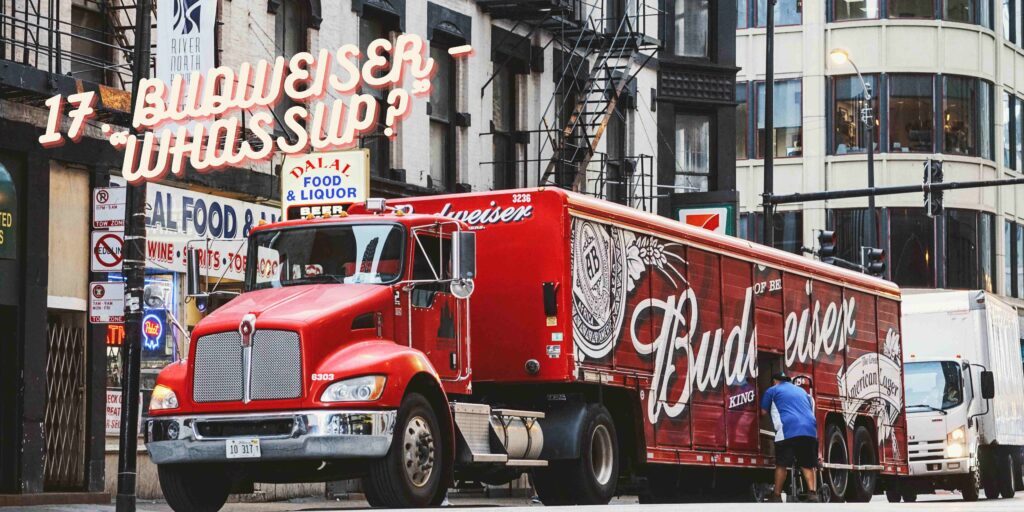
18. Southwest Airlines – “Bags Fly Free” PR Campaign
Launched in 2009, Southwest Airlines’ “Bags Fly Free” campaign promoted Southwest’s policy of allowing passengers to check two bags for free, contrasting with the industry trend of charging fees for checked baggage.
Its emphasis on highlighting the tangible benefits of flying with Southwest Airlines, particularly its commitment to offering transparent pricing and added value for customers, made this campaign noteworthy.
The “Bags Fly Free” campaign resonated with travelers who appreciated the simplicity and fairness of Southwest’s baggage policy, positioning the airline as a customer-friendly alternative to its competitors.
By highlighting its baggage policy as a point of differentiation, Southwest effectively communicated its commitment to providing a hassle-free and budget-friendly travel experience, driving customer loyalty and preference in the process.
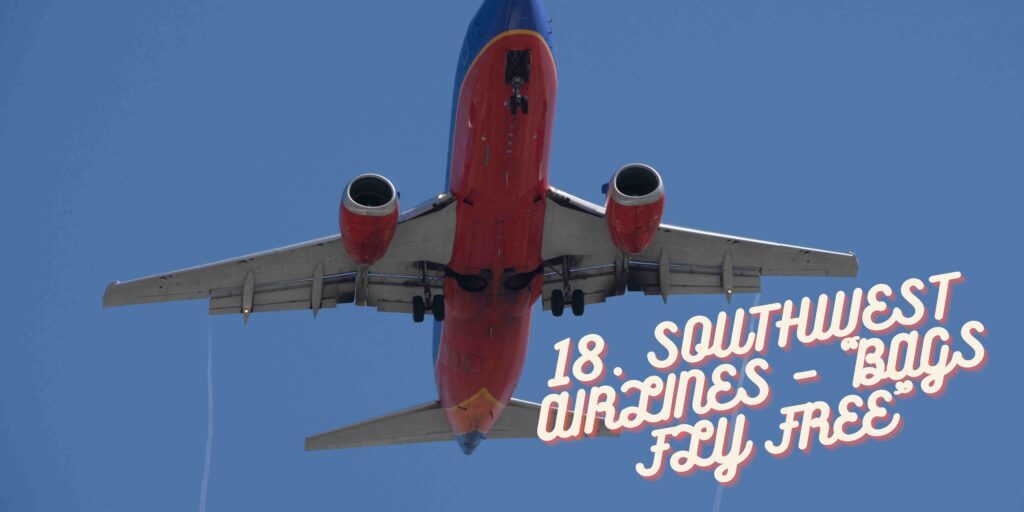
19. Tourism Queensland – “Best Job in the World” PR Campaign
Tourism Queensland’s “Best Job in the World” campaign is widely acclaimed as a pioneering and innovative PR initiative that revolutionized destination marketing.
Launched in 2009, the campaign aimed to promote tourism to the Great Barrier Reef and the islands of the Whitsundays by offering “the best job in the world” – a six-month caretaker position on Hamilton Island, complete with a generous salary and free accommodation in a luxurious villa.
What made this campaign extraordinary was its ability to generate global buzz and excitement by tapping into the universal dream of a dream job and a tropical paradise lifestyle. The “Best Job in the World” contest captured the imagination of millions of people around the world, who eagerly applied for the opportunity to become the island caretaker and share their adventures via social media and traditional media outlets.
By leveraging the power of user-generated content and social media influencers, Tourism Queensland amplified the reach and impact of the campaign, showcasing the natural beauty and attractions of the Great Barrier Reef and the Whitsundays to a global audience. The “Best Job in the World” campaign generated significant economic benefits for the region, attracting widespread media coverage and stimulating tourism to Queensland.
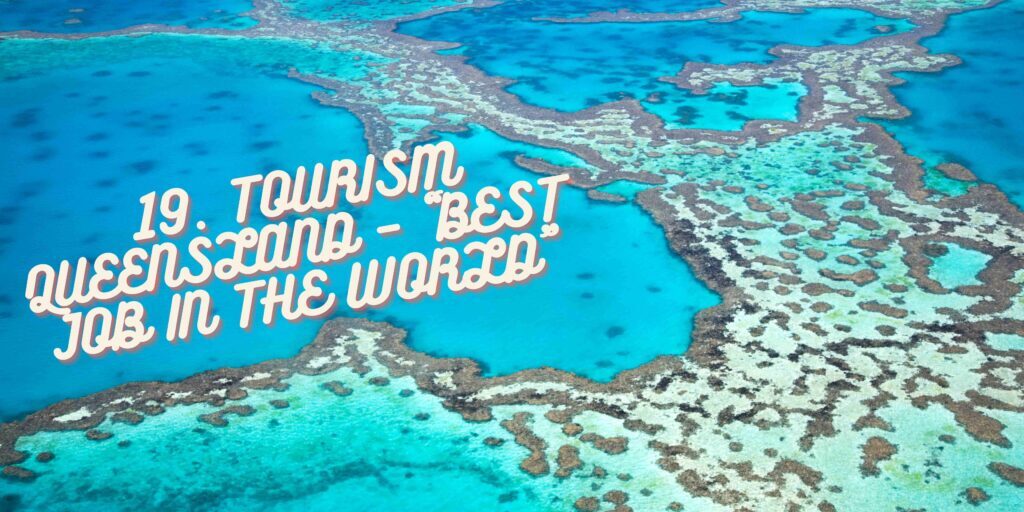
20. Oreo – “Dunk in the Dark” Twitter PR Campaign
Oreo’s “Dunk in the Dark” Twitter campaign is considered one of the best PR campaigns due to its quick thinking, timeliness, and creativity in capitalizing on a real-time event.
During the 2013 Super Bowl, a power outage occurred, plunging the stadium into darkness. Seizing the opportunity, Oreo’s social media team swiftly crafted and tweeted an image of an Oreo cookie in partial darkness with the caption “You can still dunk in the dark.”
This tweet went viral within minutes, garnering widespread attention and engagement from users across various social media platforms. Its ability to leverage a spontaneous moment and insert the brand into a cultural conversation in a relevant and humorous way was commendable. By demonstrating agility and wit, Oreo showcased its brand personality and captured the attention of millions of viewers in real-time.
The campaign’s success not only generated significant media coverage and earned impressions but also earned Oreo accolades for its innovative approach to digital marketing and social media strategy.
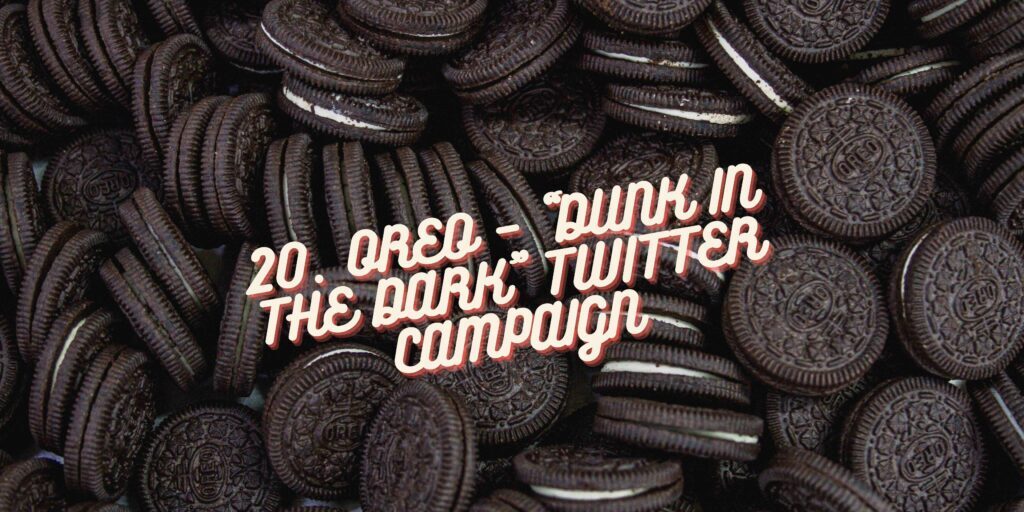
Why prioritize campaigns for your PR efforts?
- Reputation Management: PR campaigns play a crucial role in managing and safeguarding the company’s reputation. In today’s hyper-connected world, news travels fast, and a single negative incident or perception can tarnish a company’s image. PR campaigns help shape public perception, mitigate negative publicity, and build trust and credibility with key stakeholders.
- Brand Awareness and Visibility: PR campaigns are essential for increasing brand visibility and awareness among target audiences. By generating positive media coverage, securing endorsements, and engaging with influencers and thought leaders, companies can enhance their brand recognition and reach a wider audience.
- Crisis Preparedness and Response: PR campaigns are instrumental in preparing for and responding to crises effectively. Whether it’s a product recall, a public controversy, or a natural disaster, companies need strategic communication plans in place to address the situation, manage public perception, and protect their brand reputation.
- Influencing Consumer Behavior: PR campaigns have the power to influence consumer behavior and shape purchasing decisions. Through compelling storytelling, authentic messaging, and engaging content, companies can build emotional connections with consumers, drive brand loyalty, and ultimately drive sales and revenue.
- Stakeholder Engagement: PR campaigns facilitate meaningful engagement with key stakeholders, including customers, employees, investors, and the community. By communicating transparently, soliciting feedback, and demonstrating corporate social responsibility, companies can foster trust, loyalty, and long-term relationships with their stakeholders.
- Competitive Advantage: Well-executed PR campaigns can provide a competitive advantage by differentiating the company from its competitors. By showcasing unique strengths, innovation, and thought leadership, companies can position themselves as industry leaders and attract customers, talent, and investment opportunities.
How to create an effective PR campaign?
- Begin by establishing clear objectives that are specific, measurable, achievable, relevant, and time-bound (SMART), aligning with overarching business goals.
- Understanding the target audience is crucial, requiring thorough research to grasp demographics, preferences, and behaviors.
- Craft compelling storytelling that resonates emotionally, fostering authenticity and transparency to build trust and credibility with the audience.
- Utilize a multi-channel approach, integrating traditional media, social media, digital platforms, events, and influencer marketing to reach the target audience effectively.
- Stay vigilant in monitoring and responding to conversations in real-time, while also measuring performance against predefined metrics and KPIs to track success and identify areas for improvement.
- Cultivate relationships with media and influencers to amplify the message and foster mutually beneficial partnerships.
- Remain agile and adaptable, ready to pivot strategies based on market changes and emerging trends.
- Finally, evaluate campaign effectiveness comprehensively, learning from successes and failures to inform future PR initiatives.
Conclusion
Throughout this exploration, it’s evident that exemplary PR campaigns serve as powerful tools in modern marketing, transcending mere promotion to craft compelling narratives that resonate deeply with audiences. These campaigns harness the art of storytelling, strategic communication, and creative innovation to not only capture attention but also shape brand perception and influence public sentiment.
In an era defined by constant connectivity and information overload, the significance of PR campaigns in shaping brand narratives and driving engagement cannot be overstated. They represent a vital component of a company’s marketing strategy, contributing to its overall success and sustainability.



 Nike’s “Dream Crazy” Campaign with Colin Kaepernick
Nike’s “Dream Crazy” Campaign with Colin Kaepernick


















